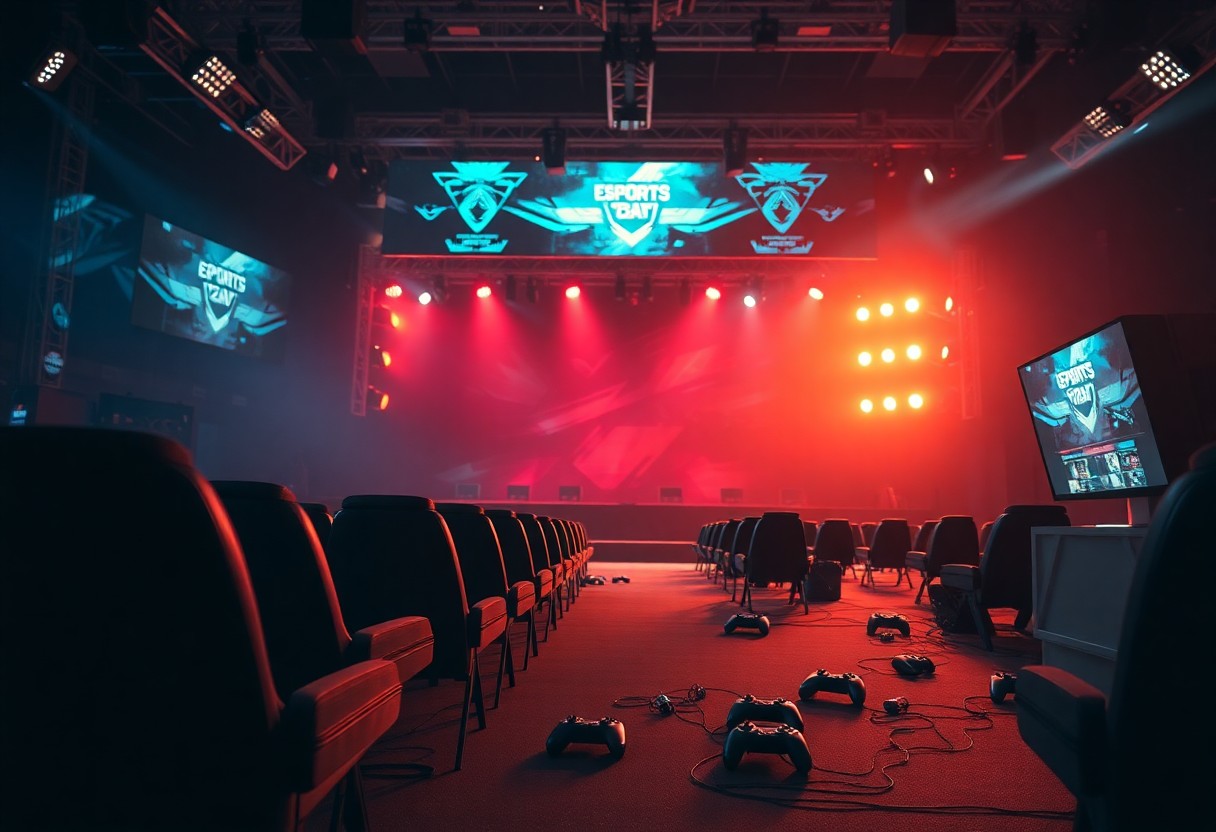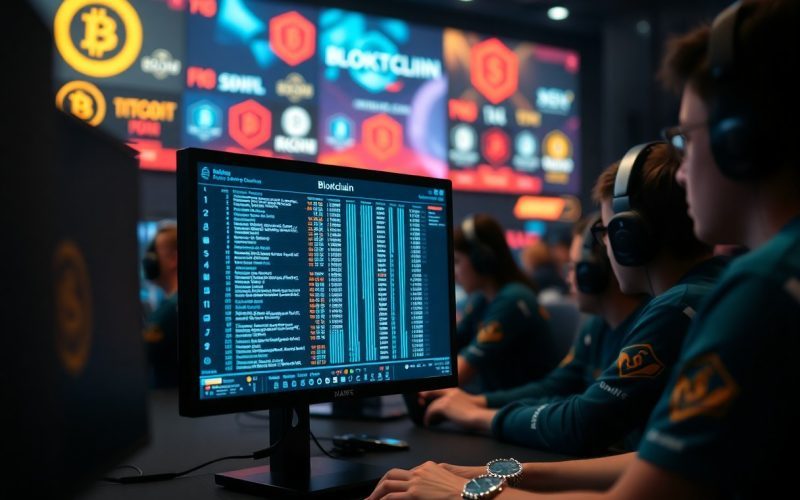It’s important to understand that not all esports titles can achieve success in the competitive gaming industry. Various factors contribute to the downfall of certain games, ranging from lackluster gameplay mechanics and inadequate community support to ineffective marketing strategies and poor developer engagement. This blog post will explore the key reasons behind the failure of some esports titles, highlighting the lessons learned and what aspiring game developers can do to avoid similar pitfalls.
Market Saturation
Before discussing the reasons behind the failure of certain esports titles, it is crucial to consider the phenomenon of market saturation. With the rapid growth of the esports industry, a multitude of games has flooded the market, creating a highly competitive landscape. This saturated environment can lead to diminished opportunities for new titles to gain traction, as players have a plethora of choices available to them. Consequently, some games may struggle to carve out their niche, causing them to fade into obscurity amidst a sea of similar offerings.
Overlapping Genres
Below the surface of market saturation lies the issue of overlapping genres. Many esports titles tend to fall within familiar categories, such as first-person shooters, battle royales, or multiplayer online battle arenas (MOBAs). When numerous games are vying for the same audience, it becomes increasingly difficult for new entrants to establish their identity. Players often gravitate towards established titles that offer a proven track record of engagement and community support, leaving lesser-known games without a dedicated following. This overlap can stifle innovation and make it challenging for new games to resonate with potential players.
Lack of Differentiation
Genres within gaming have experienced notable growth, leading to the misconception that merely launching a game in a popular category is sufficient for success. However, games that lack differentiation from their competitors often struggle to maintain player interest. Titles that do not offer unique gameplay mechanics, engaging narratives, or innovative features quickly become forgettable, as players opt for experiences that stand apart from the crowd. In a marketplace filled with similar games, a lack of distinguishing factors can spell disaster for a new esports title.
Further complicating the situation is the tendency for developers to replicate successful formulas, expecting them to yield similar popularity rates. This strategy can backfire, as gamers typically seek new and engaging experiences rather than copies of existing games. For successful differentiation, developers must focus on creating unique gameplay elements, fostering strong communities, and honing brand identities that resonate with players. By failing to innovate and stand out, new titles run the risk of being lost in the overwhelming competition of the esports ecosystem.
Player Engagement
If a game fails to capture and maintain player engagement, it runs the risk of dwindling in popularity and ultimately facing decline. Engaging players involves not just the gameplay mechanics but also a robust ecosystem that fosters community interaction, personal investment, and competitive spirit. Titles that neglect these aspects tend to experience higher player churn rates, as gamers are less likely to stick around when they feel disconnected from the game or its community. Thus, understanding the dynamics of player engagement is important for sustaining a successful esports title.
Community Building
Behind every successful esports title is a vibrant community that thrives on interaction, collaboration, and shared experiences. When players feel a sense of belonging and camaraderie, they are more likely to stay engaged with the game over an extended period. This engagement can be cultivated through forums, social media channels, and in-game events that encourage players to connect with each other and the developers. A strong community not only retains existing players but also attracts new ones, creating a positive feedback loop that can elevate a game’s standing in the esports landscape.
Game Longevity
Longevity in esports titles is often linked to how well the developers manage updates, balance gameplay, and respond to player feedback. Players expect continuous improvement and evolving content that keeps the experience fresh and exciting. A lack of regular updates may lead to player apathy, and when players perceive that a game is stagnant or not evolving, they are likely to drift toward more dynamic alternatives. Therefore, maintaining game longevity requires a commitment to understanding player needs and innovating consistently.
This commitment to game longevity not only retains existing players but also lays the groundwork for new ones. Developers who implement regular balance patches, introduce new game modes, and host competitive events can significantly boost player investment in the title. Moreover, by actively involving the community in discussions about changes and future directions, developers can mitigate discontent and foster a sense of shared ownership among players. All of these factors contribute to a game’s continual relevance in the highly competitive esports arena.
Developer Support
Any esports title thrives when its developer actively engages with the game’s community and provides ongoing support. However, when developers fail to prioritize consistent updates and bug fixes, it can lead to player frustration and disengagement. Esports players, both casual and professional, rely heavily on a stable gaming environment that allows for fair competition. A neglectful approach to development can create an uneven playing field, driving players to seek out alternatives that offer more attentive support.
Updates and Patches
About the necessity of regular updates and patches, they serve to not only fix bugs but also to enhance gameplay with new features and content. Players expect their favorite titles to evolve and adapt over time; without a commitment to updates, a game can quickly become stale. Furthermore, timely patches are important for balance adjustments, which can significantly impact competitive play. Failing to address issues promptly can result in a game’s decline, as players become disillusioned with unresolved problems.
Developer Communication
On the topic of developer communication, establishing a transparent and open line of dialogue with the player base is fundamental in maintaining interest and loyalty. When developers actively engage with their community through updates, forums, or social media, they foster a sense of inclusivity, allowing players to feel their feedback is valued. In contrast, a lack of communication can lead to speculation and dissatisfaction, as players feel neglected and unimportant.
For instance, when developers share insights on upcoming changes or acknowledge community concerns, it cultivates a positive relationship with gamers. Such an approach not only helps in addressing player issues promptly but also generates excitement for game updates. Games that do not embrace this level of engagement may find themselves facing a disinterested community, as players feel left in the dark and may turn their attention to other titles with better developer support.
Competition and Accessibility
Not all esports titles foster an environment where players can easily engage and compete. While competition drives interest, the accessibility of a game to a broad audience is a determining factor in its success. Developers must consider the entry barriers that exist within their titles, including complex mechanics, steep learning curves, and hardware requirements. If a game demands intensive commitments from players in terms of skill acquisition or investment in high-end gaming equipment, it risks alienating potential new players who may find the task daunting.
Entry Barriers
Below the surface of a seemingly vibrant game community lie significant entry barriers that can hinder growth. These barriers often include the complicated mechanics that require extensive practice to master, ultimately pushing casual players away. Moreover, when a game mandates the use of advanced gaming gear or a powerful PC for optimal performance, it excludes those who do not have the financial means or technical know-how to meet these demands. As a result, the demographic that can engage with the game narrows, leading to a stagnant competitive environment.
Esports Infrastructure
Above the individual player experience, the infrastructure surrounding esports is key to its development and sustainability. A solid framework, which includes professional leagues, sponsorship opportunities, and support systems for both amateurs and professionals, is necessary for a game’s longevity in the esports scene. Without established tournaments or platforms for players to showcase their skills, potential talent goes unnoticed, and the competitive scene stagnates, making it difficult for a game to attract players and audiences alike.
It is imperative for developers and organizers to cultivate a comprehensive esports infrastructure that facilitates the growth of the community. This includes providing adequate resources for teams, developing local and international tournaments, and offering pathways for aspiring players to transition into professional levels. Such support not only enriches the player experience but also enhances viewer engagement, ultimately establishing a vibrant esports ecosystem that can sustain itself and draw in new talent over time.
Monetization Strategies
Once again, the success of an esports title heavily rests on its monetization strategies. Developers often explore various avenues to ensure revenue generation, but a poorly implemented strategy can hinder player retention and community growth. When a game leans too heavily on aggressive monetization, especially with practices perceived as exploitative, it risks alienating its audience. Conversely, a balanced approach that respects the player’s experience can foster a loyal community while steadily increasing revenue, as happy players are more likely to spend on in-game content.
In-Game Purchases
Before delving into in-game purchases, it’s imperative to understand that this model has the potential to significantly impact player engagement. Players often appreciate the ability to customize their in-game experience, provided these purchases do not disrupt game balance. Titles that offer purely cosmetic items or optional content typically fare better compared to games that implement pay-to-win mechanics. Striking a balance between offering enticing content and ensuring fairness can be the key to a successful in-game purchase strategy.
Sponsorship and Advertising
Any discussion about monetization in esports would be incomplete without mentioning sponsorship and advertising. These avenues can provide substantial revenue, especially if the game garners a significant following. Titles that successfully collaborate with brands to create engaging advertising experiences—without overwhelming the player base—often achieve a sustainable revenue stream. It is vital for developers to prioritize authentic partnerships that resonate with the gaming community rather than resorting to intrusive advertisements, which can detract from the gaming experience.
Hence, both sponsorship and advertising serve as imperative components of a comprehensive monetization strategy. When executed thoughtfully, they can enhance the visibility of the game and create mutually beneficial arrangements for both developers and brands. However, it’s imperative that these partnerships feel organic and align with the interests of players. Unsuccessful execution can often lead to detraction from gameplay, potentially causing players to seek alternative titles that prioritize immersive experiences over revenue generation.
Trends and Evolving Preferences
Your understanding of current trends in player behavior is vital for recognizing why certain esports titles struggle to maintain their popularity. The gaming landscape is constantly shifting, influenced by factors such as technological advancements, cultural phenomena, and social media trends. Titles that fail to acknowledge these changes often find themselves losing their grip on the audience, as newer games capture player interest with innovative features or a fresh approach. The competitive gaming market is fast-moving, and a title’s relevance can diminish quickly if it doesn’t evolve alongside player demands and emerging preferences.
Changing Player Interests
By observing the shifts in player interests, it becomes evident that what players value today may differ significantly from past preferences. For instance, titles that were once top-tier might now seem outdated as gamers increasingly gravitate towards more dynamic, faster-paced experiences. Games that are unable to pivot in response to these changing interests often see a decline in their player base, as individuals seek to engage with content that resonates with their evolving tastes and expectations. This leads to the phenomenon of players migrating to more modern or relevant titles, leaving the once-popular games in a state of neglect.
Adaptability to New Trends
After examining overall market behavior, it’s clear that adaptability is key for any esports title hoping to succeed. Developers need to stay in tune with not only the preferences of their existing players but also with potential new audiences. Games that fail to innovate or respond to shifts in gaming culture, mechanics, and community expectations may struggle to keep their player base engaged. The ability to introduce new content, features, or gameplay mechanics reflective of emerging trends can play a significant role in maintaining a game’s relevance in an increasingly competitive environment.
Hence, a successful title must embody a willingness to adapt and evolve. Developers should actively gather feedback from their community and keep a close eye on industry trends, leveraging these insights to inform design choices and updates. This proactive approach not only helps sustain existing player engagement but can also attract new gamers looking for fresh experiences. When a title neglects these elements, it risks falling behind as new competitors rise to captivate the market.
Final Words
With this in mind, it becomes evident that the longevity of esports titles is influenced by multiple factors that can lead to their failure. One of the most significant issues is the lack of consistent developer support, which can result in game balance problems, broken mechanics, or failure to adapt to the evolving needs of the competitive community. Without ongoing updates and engagement from the developers, players may quickly lose interest, leading to a decline in player base and sponsorship opportunities. Moreover, a poorly executed marketing strategy can prevent potential players from discovering the game, limiting its growth from the outset.
Additionally, a game’s overall design and accessibility play a pivotal role in its success. If a game is overly complex or requires a prohibitive investment in time or money, it can alienate casual players, who form the backbone of an esports community. Titles that lack a clear skill gap or don’t offer an engaging experience may struggle to attract and retain both new and veteran players. Summing up, the failure of some esports titles often stems from a combination of inadequate support, ineffective marketing, and accessibility challenges, underscoring the necessity for developers to be attuned to the community’s needs and preferences for sustained success.






